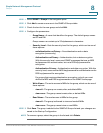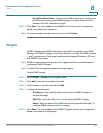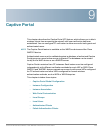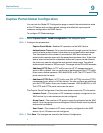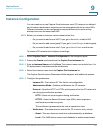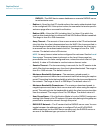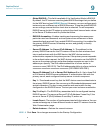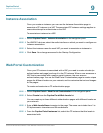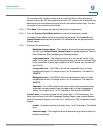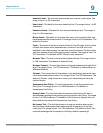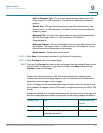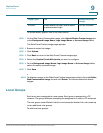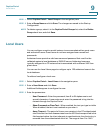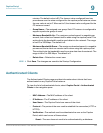
Captive Portal
Instance Configuration
Cisco Small Business WAP551 and WAP561 Wireless-N Access Point 142
9
• Global RADIUS—This field is available if the Verification Mode is RADIUS.
By default, the CP instance uses the global RADIUS settings that you define
for the WAP device (see RADIUS Server). However, you can configure each
instance to use a different set of RADIUS servers. To use the global RADIUS
server settings, ensure that the check box is selected. To use a separate
RADIUS server for the CP instance, uncheck the check box and enter values
in the Server IP Address and Key fields that follow.
• RADIUS Accounting—Enables tracking and measuring the resources a
particular user has consumed, such as system time and amount of data
transmitted and received. If you enable RADIUS accounting, it is enabled for
the primary RADIUS server, all backup servers, and globally or locally
configured servers.
• Server IP Address 1 or Server IPv6 Address 1—The address for the
primary RADIUS server for this CP instance. When the first wireless client
tries to authenticate with the WAP device, the WAP device sends an
authentication request to the primary server. If the primary server responds
to the authentication request, the WAP device continues to use this RADIUS
server as the primary server, and authentication requests are sent to the
address you specify. The IPv4 address should be in a form similar to
xxx.xxx.xxx.xxx (192.0.2.10). The IPv6 address should be in a form similar to
xxxx:xxxx:xxxx:xxxx:xxxx:xxxx:xxxx:xxxx (2001:DB8::CAD5:7D91).
• Server IP Address 2 to 4 or Server IPv6 Address 2 to 4—Up to three IPv4
or IPv6 backup RADIUS server addresses. If authentication fails with the
primary server, each configured backup server is tried in sequence.
• Key 1—The shared secret key that the WAP device uses to authenticate to
the primary RADIUS server. You can use up to 63 standard alphanumeric and
special characters. The key is case sensitive and must match the key
configured on the RADIUS server. The text you enter is shown as asterisks.
• Key 2 to Key 4—The RADIUS key associated with the configured backup
RADIUS servers. The server at Server IP (IPv6) Address 2 uses Key 2, the
server at Server IP (IPv6) Address 3 uses Key 3, and so on.
• Locale Count—The number of locales associated with the instance. You can
create and assign up to three different locales to each CP instance from the
Web Customization page.
• Delete Instance—Deletes the current instance.
STEP 6 Click Save. Your changes are saved to the Startup Configuration.



